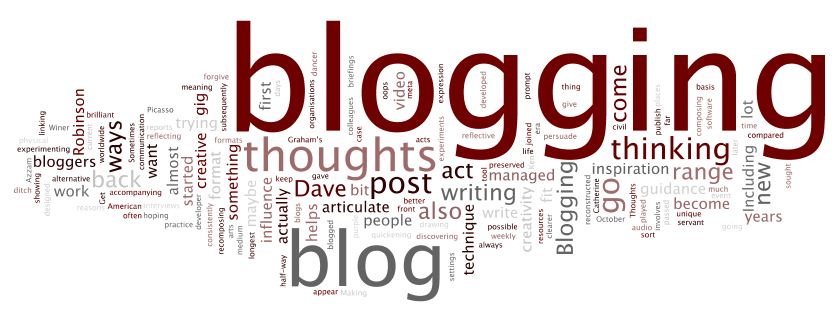![]()
“There is a vitality, a life force, an energy, a quickening that is translated through you into action, and because there is only one of you in all time, this expression is unique. And if you block it, it will never exist through any other medium and will be lost.”
I’ve passed the half-way point of my GovLoop blogging residency. So far, so great! This is actually the longest I’ve managed to blog consistently on a weekly basis (oops, maybe should have mentioned that to Catherine before she gave me the gig!). Since I’ve been blogging here, I’ve also managed to fit in another couple of posts for my other current blogging gig. So, I appear to be going through a bit of a blogging purple patch at the minute!
I’ve also been thinking a lot about blogging. I’m always trying to persuade people to give it a go. And I’m currently writing some guidance for colleagues who will be blogging internally on our new intranet. So, I’ve been trying to work out better ways to articulate the benefits of blogging.
So, forgive me while I come over all meta for a bit and blog about blogging. Specifically, blogging as a creative act.
Blogging beginnings
Blogging has (almost) come of age. On 7 October 1994, Dave Winer, a software developer in California, ushered in a new era of communication when he published his first blog post. He called his blog Davenet, and he’s been writing it most days since. Today he’s joined by many millions of bloggers worldwide.
Including me. I wasn’t online back when Dave started his blog, but I’ve been reading blogs for maybe 15 years. And I’ve been blogging myself for about 10 years, on and off. I started my own blog to support my professional development – a blog is a brilliant tool for reflective practice.
I’ve subsequently blogged in a range of places, for a range of people and organisations. For a range of reasons.
Blogging as creativity
Ken Robinson says of creativity, it ”involves doing something, it’s a process, not an event” (Robinson, 2009 quoted in Azzam, 2009, p. 22). Well, blogging is certainly ‘doing something’. For me, blogging is about constructing meaning, discovering and drawing out internal thoughts and externalising them. My ideas are on the screen in front of me; they can be stored, retrieved and reconstructed as they become clearer. The act of composing and recomposing helps those abstract thoughts become more concrete.
My blog acts almost as a mirror – reflecting my thoughts back at me. Sometimes I don’t really know what I’m thinking until I actually write it down in a physical format. And blogging helps me break out of any inertia in my thinking.
As my blogging has developed I’ve found myself experimenting with new ways to articulate what I want to say. I’ve sought out alternative ways to express myself – through images, quotes, storytelling, video, audio, linking to other resources.
I’ve played around with different voices. As a civil servant, I write a lot of reports, briefings, technical guidance, that sort of thing. There’s not much opportunity to be creative with those. I can say things in a blog post that wouldn’t fit in other formats or settings.
And I don’t have to publish if I decide I want to keep those experiments private. I can save them and come back to them later. Or I can ditch them.
But often, as in this case, I’m writing for an audience. Then, my blogging becomes a social act. The blogging format is designed for interaction. Here, as I’m thinking about blogging, I’m sharing those thoughts with you. And hoping that my thoughts will prompt you to have thoughts about blogging. Thoughts that you’ll then share with me!
Get your blog on
And, perhaps, by blogging, I’m showing you what is possible. Making it real for you. Inspiring you to have a go yourself. The bloggers inspired to have a go by that first post of Dave Winer’s went on to be an inspiration to others. Including me. Can I be an inspiration to you?
But before I go…
The quote accompanying this post comes from Martha Graham – an American dancer and choreographer whose influence on dance has been compared with the influence Picasso had on the modern visual arts. She was also a powerful communicator and was known for her generosity. Much of Graham’s work and technique have been preserved because she allowed her assistants to tape interviews of her describing her technique, and to video her performances.
References
Azzam, A. (2009) Why creativity now? A conversation with Sir Ken Robinson. Teaching for the 21st Century, Educational Leadership, 67(1), pp. 22-26.
Lesley Thomson is part of the GovLoop Featured Blogger program, where we feature blog posts by government voices from all across the country (and world!). To see more Featured Blogger posts, click here.





Leave a Reply
You must be logged in to post a comment.